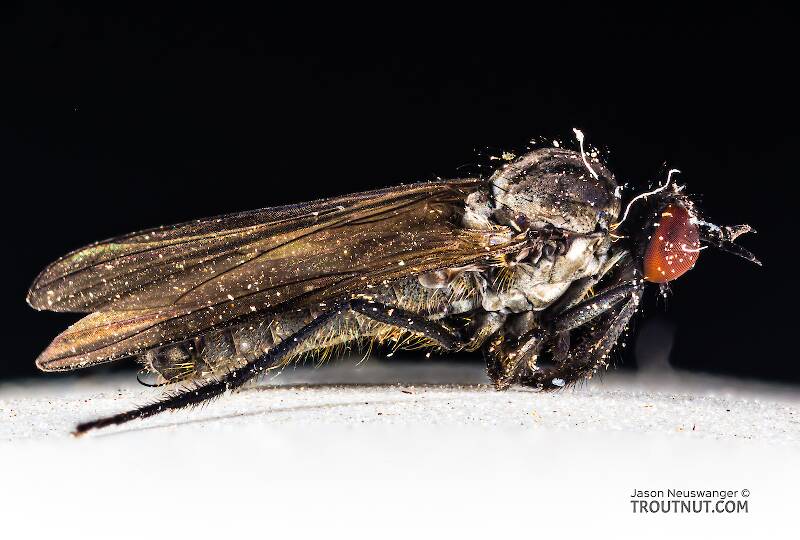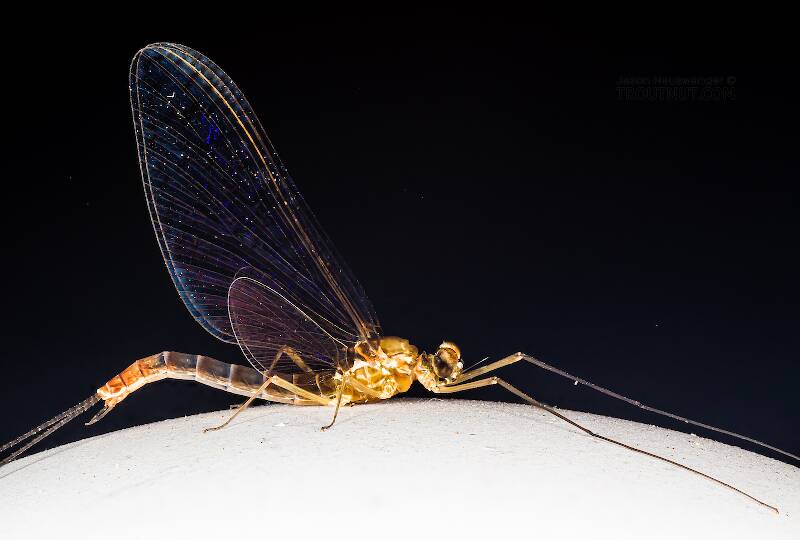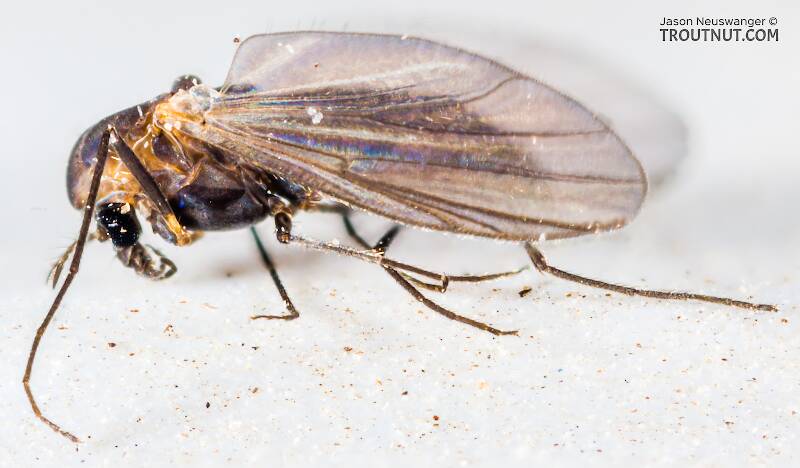
Hex Mayflies
Hexagenia limbata
The famous nocturnal Hex hatch of the Midwest (and a few other lucky locations) stirs to the surface mythically large brown trout that only touch streamers for the rest of the year.
Featured on the forum

This specimen appears to be of the same species as this one collected in the same spot two months earlier. The identification of both is tentative. This one suffered some physical damage before being photographed, too, so the colors aren't totally natural. I was mostly photographing it to test out some new camera setting idea, which worked really well for a couple of closeups.

Troutnut is a project started in 2003 by salmonid ecologist Jason "Troutnut" Neuswanger to help anglers and
fly tyers unabashedly embrace the entomological side of the sport. Learn more about Troutnut or
support the project for an enhanced experience here.
By Troutnut on May 21st, 2022
On May 22, I went up to the South Fork of the Snoqualmie to poke around. The river was still too high and cold from snowmelt to be much good.
Photos by Troutnut from the South Fork Snoqualmie River in Washington




Closeup insects by Troutnut from the South Fork Snoqualmie River in Washington

I'm not fully confident in the ID on this one. I couldn't see for sure that there are two equal pads under the tarsal claws instead of three, but it seems that way. The antennae are 4-segmented, although I'm not sure if the last segment counts as a "segment" rather than a style@ or arista sticking off the third segment. It has three ocelli. The key characteristics generally point to Empididae except "Vein R4+5 usually branched." That vein certainly isn't branched in this specimen, but the key does say "usually."

The identification of this specimen is not positive because some of the key characteristics conflict. The uniform amber tint of the wings and the rusty-colored mid-ventral markings on some of the abdominal sternites point to Cinygmula uniformis, but I could not locate the small ventral subapical spines on the penes that are supposed to also diagnose that species (the ones visible in the pictures aren't the ones I'm talking about). If I prioritize that characteristics, this would probably be Cinygmula mimus, but then the wing and sternite shading/markings are wrong.

This extremely tiny fly was puzzling to identify. I collected it from a sparse mating swarm just above the surface of the river. It just doesn't have the "look" I'm used to seeing in Chironomids, but the key characteristics in Merritt, Cummins, & Berg point that way.
-Maxillary palp apparently with 4 segments, antenna with 6
-I can't see any ocelli and wing venation doesn't seem to match Axymyiidae
-Costa definitely ends at or near apex of the wing (pictured)
-Obvious characteristics and wing venation rule out a few other things
-Simuliidae seems like a possibility due to the broad wings, but bugguide says they're supposed to have more antennal segments (eleven, though a different source says some have ten, at least in the Southern Hemisphere).
-Postnotum with median longitudinal groove (pictured) rules out Ceratopogonidae
So my guess is some kind of chironomid from a genus that doesn't have the classic midge look. There are some like that.
-Maxillary palp apparently with 4 segments, antenna with 6
-I can't see any ocelli and wing venation doesn't seem to match Axymyiidae
-Costa definitely ends at or near apex of the wing (pictured)
-Obvious characteristics and wing venation rule out a few other things
-Simuliidae seems like a possibility due to the broad wings, but bugguide says they're supposed to have more antennal segments (eleven, though a different source says some have ten, at least in the Southern Hemisphere).
-Postnotum with median longitudinal groove (pictured) rules out Ceratopogonidae
So my guess is some kind of chironomid from a genus that doesn't have the classic midge look. There are some like that.

